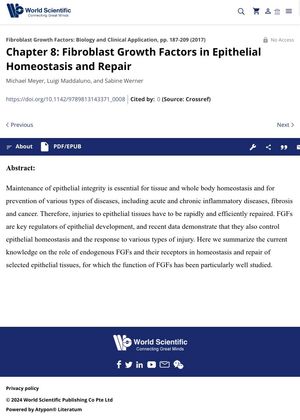Fibroblast Growth Factors in Epithelial Homeostasis and Repair
December 2016

TLDR Fibroblast Growth Factors (FGFs) help maintain and repair skin tissues, which is important for preventing diseases like inflammation, fibrosis, and cancer.
The document "Fibroblast Growth Factors in Epithelial Homeostasis and Repair" from 2016 discussed the role of Fibroblast Growth Factors (FGFs) in maintaining and repairing epithelial tissues. Epithelial integrity is crucial for preventing diseases such as inflammation, fibrosis, and cancer. FGFs were identified as key regulators of epithelial development, and recent data at the time showed that they also controlled epithelial homeostasis and response to various types of injury. The document summarized the knowledge on the role of endogenous FGFs and their receptors in the homeostasis and repair of selected epithelial tissues.





